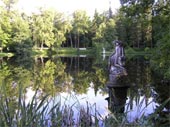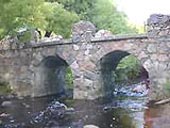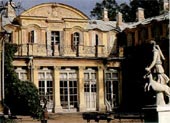| RTG |
Russia |
Travel Group |
|
 |
 |
Your insiders in Russia
www.r-tg.com
|
| Toll free phone |
| 1-866-387-5141 |
| USA office phone |
| 1-770-789-4664 |
|
|
|
|
|
 |
|
|
| |
In order to send a request or get more detailed information please contact travel@r-tg.com or fill in the booking forms below:
Tours Order Form
Hotel Order Form
Transfer Order Form
Tickets Order Form
or call us at our toll free number 1-866-387-5141.
Oranienbaum  The name of Orienbaum (German for “Orange-tree”), the estate of Alexander Manshikov, Peter Great’s companion-in-armes, stresses a private ather then formal character of the summer residence of the influential coutier. The palace-and-park ensemble is situated on the southern shore of the Gulf of Finland opposite Kronshtadt (architects D. Fontana and I. Schedel). In 1743 Oranienbaum became the summer residence of the Emperor Paul III. The Fortress Petershtadt with a petite palace was constructed for him by A. Rinaldi. Later he built the Chinese Palace and the Katalnaya Gorka by the order of Catherine the Great. All these buildings combine exquisite style rococo with traces of classicism. The name of Orienbaum (German for “Orange-tree”), the estate of Alexander Manshikov, Peter Great’s companion-in-armes, stresses a private ather then formal character of the summer residence of the influential coutier. The palace-and-park ensemble is situated on the southern shore of the Gulf of Finland opposite Kronshtadt (architects D. Fontana and I. Schedel). In 1743 Oranienbaum became the summer residence of the Emperor Paul III. The Fortress Petershtadt with a petite palace was constructed for him by A. Rinaldi. Later he built the Chinese Palace and the Katalnaya Gorka by the order of Catherine the Great. All these buildings combine exquisite style rococo with traces of classicism.
In the early 18th century the palace and park ensemble of Oranienbaum belonged to Prince Alexander Menshikov. After the revolution of 1917 the palaces were nationalized and became museums. Nowadays, the Oranienbaum estate comprises three ensembles: the Great Palace, Peterstadt and the "Personal Dacha". The Great Palace (1710-1727,  architects Giovanni Mario Fontana and Gottfried Johann Schadel) was built in the Baroque style. The rooms of the palace abound with painted panels, intricate stuccowork and parquetry designs. On display is a collection of 17th and 18th century Western European paintings. There is also an exhibition devoted to the history of the construction of the palace and park ensemble in Oranienbaum. The ensemble of the "Personal Dacha" consists of Catherine II's Chinese Palace (1762-68, architect Rinaldi), the Sliding Hill Pavilion (1762-74, architect Rinaldi) and the surrounding Upper Park. The highlight of the estate, the Chinese Palace - is a splendid monument of Rococo architects Giovanni Mario Fontana and Gottfried Johann Schadel) was built in the Baroque style. The rooms of the palace abound with painted panels, intricate stuccowork and parquetry designs. On display is a collection of 17th and 18th century Western European paintings. There is also an exhibition devoted to the history of the construction of the palace and park ensemble in Oranienbaum. The ensemble of the "Personal Dacha" consists of Catherine II's Chinese Palace (1762-68, architect Rinaldi), the Sliding Hill Pavilion (1762-74, architect Rinaldi) and the surrounding Upper Park. The highlight of the estate, the Chinese Palace - is a splendid monument of Rococo  architecture. Its interiors are striking for the wealth and variety of their decor. Particularly exquisite is the Buglework Study. The state rooms are adorned with stylized Chinese motifs, hence the name. The palace houses collections of paintings by artists of the Venetian School, Russian and Western European porcelain, furniture and works of Oriental decorative and applied art, which were very highly rated in the 18th century. The halls of the Sliding Hill Pavilion (the hill itself has not survived) contain a display of porcelain statuettes from Meissen. architecture. Its interiors are striking for the wealth and variety of their decor. Particularly exquisite is the Buglework Study. The state rooms are adorned with stylized Chinese motifs, hence the name. The palace houses collections of paintings by artists of the Venetian School, Russian and Western European porcelain, furniture and works of Oriental decorative and applied art, which were very highly rated in the 18th century. The halls of the Sliding Hill Pavilion (the hill itself has not survived) contain a display of porcelain statuettes from Meissen.
|
|
| |
|
|
 |
|
|
|
|
|
|
| |

